Colonel Tom Thompson, U.S. Army: From Vietnam to Hollywood – Forging a Unique Army Career
It takes a special person to endure a long career in the military. Wartime deployments, long family separations with missed birthdays, anniversaries, and holidays, and the strain of command compete against the strong sense of duty, camaraderie, and public service officers feel as they decide whether to continue in the military or leave to pursue a civilian career. Colonel Tom Thompson, U.S. Army (Retired), experienced all these factors and more as he navigated his twenty-six-year career in the Army that included two combat deployments to Vietnam. Throughout it all, he balanced duty and family to make both sides win. This is his story.
Tom was born in Philadelphia, Pennsylvania, in July 1943. His father was an enlisted soldier in the Army whose job at the time was to escort the remains of servicemembers killed in action to their hometowns so they could be buried near their grieving families. Soon thereafter, his father would complete Officer Candidate School (OCS) and celebrate his twenty-first birthday on D-Day in England, having helped prepare for the invasion. Once World War II ended, Tom’s father got out of the military and tried college, but after a year he rejoined the Army as an officer, setting the stage for Tom’s childhood as an “Army brat”.
In 1949, the family moved to Sendai, Japan, as part of the post-World War II occupation forces. Life was good until June 1950 when the Korean War broke out and Tom’s father was shipped, along with many other U.S. servicemembers, from Japan to South Korea to shore up the country’s crumbling defenses. Tom’s father was awarded the Silver Star for his actions in North Korea, where he returned six wounded soldiers to safety after a daring escape in a jeep through enemy lines.
In 1951, Tom’s father was reassigned for a short period to Fort Monmouth in New Jersey, but then was sent to Babenhausen, Germany. Tom attended fourth and fifth grade in Aschaffenburg, a thirty-minute bus ride away, however he was able to attend the sixth grade in Babenhausen. His father, who was an artillery officer, had a young officer in his battery named Jonathan Bush, the son of Senator Prescott Bush and the brother of future President George Herbert Walker Bush. Tom got to meet Senator Bush and his wife, Dorothy, because Tom’s mother hosted the Bushes at their quarters. Jonathan Bush also coached Tom’s sixth grade basketball team.
After Germany, Tom’s father transferred to Fort Sill, Oklahoma, where the Army trains soldiers and officers in the art of field artillery. His father’s job was to teach soldiers how to fire artillery pieces – the Army’s biggest guns. He so loved his job that he used to sit with Tom at the kitchen table showing him how to use a slide rule to compute firing data. To complete the lesson, he sometimes took Tom with him when his students practiced adjusting live fire on the base range. Tom also received a more conventional education at Fort Sill, where he completed the seventh, eighth, and ninth grades.
From Fort Sill, the family moved back to Germany, this time to Dachau, about twenty miles northwest of Munich. Tom attended the Munich American High School, where he played basketball and ran track. During his senior year, he also started dating a junior named Leanne, but the romance ended after Tom graduated in 1961 and his family returned to the United States for Tom’s father’s next assignment at Fort Huachuca, Arizona.
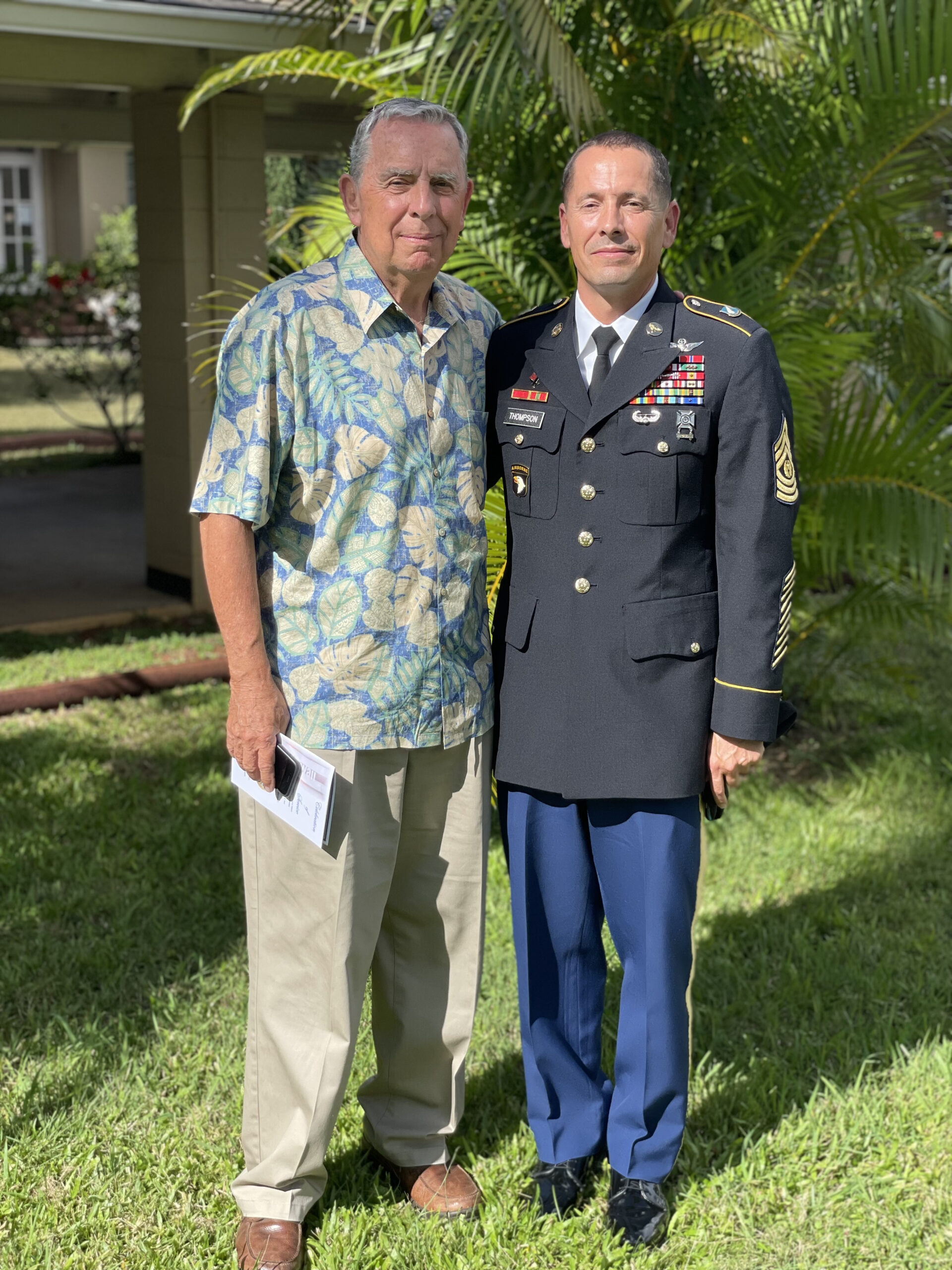
During Tom’s high school years, he often spent summers visiting his mother’s parents in Colorado and his father’s parents in Oklahoma City. In Oklahoma City, he became close to a cousin his age who convinced him they should both attend the University of Oklahoma, which they did in the fall of 1961. They also rushed a fraternity together. Unfortunately, Tom only lasted two years. He was taking a heavy course load hoping to go to medical school, but with the workload and his fraternity commitment pulling him in opposite directions, he decided not to go back after his sophomore year.
As he had done over the previous two summer breaks from college, Tom returned to Fort Huachuca to live with his parents and work for a company moving soldiers’ household goods on and off post. His father suggested he might do better at school if he attended someplace closer to home, so he enrolled at the University of Arizona, which was only an hour away in Tucson. He also met a young woman whose father was a senior civilian on post and they became engaged. They were married a year later at the post chapel, but the wedding heralded the return to a heavy workload for Tom. Now, in addition to attending school full time at the University of Arizona, he worked nights at the Tucson Country Club to earn enough money to make ends meet. He also participated in ROTC, which meant in return for assistance covering the cost of his college expenses, he owed the Army service as an officer once he graduated.
As graduation approached, Tom learned the Army had designated him to serve in the Air Defense Artillery. Wanting instead to follow in his father’s footsteps, he petitioned to be permitted to go into the Field Artillery. The Army approved his petition and, after graduating from the University of Arizona at the end of 1965, he was commissioned as a Second Lieutenant (O-1) in February of 1966, just as the Vietnam War was escalating. The nomadic life he’d enjoyed as an Army brat was about to enter a new cycle, this time with his own Army career – not his father’s – driving the moves.
In the summer of 1966, Tom moved his wife and their newborn son to Fort Sill, Oklahoma, so he could begin the Basic Officer Course for field artillery officers. He rented an apartment for $90/month and purchased a new Volkswagen Beetle for $1600, both significant investments since he only earned $300/month. As he neared completion of the six-month training, he and his wife were both excited to learn they would be moving to Germany for his first permanent duty assignment.
Shortly thereafter, the staff pulled Tom and eleven others aside and said their orders had been cancelled. Instead, given the Vietnam War’s growing need for new officers, they were being assigned as Tactical Officers (TACs) to train new officer candidates to become artillery officers. They would do this for two years and then be discharged from the Army with no further service obligation. While this was good news for some, it was not the news Tom wanted to hear. He wanted to stay in the Army and knew if he took the TAC job, he would never progress. Still orders were orders, so he began the assignment, looking for a way out.
As it turned out, the new job impacted more than his career – it destroyed his family life. As a TAC, he had to be with his trainees from the time they woke up early in the morning until the time they went to bed in the evening. That left Tom’s wife and infant son at home alone all day and they were miserable. Eventually, Tom’s wife left him and took their son back to Arizona to live with her parents and file for divorce. It was a very painful period in Tom’s life. Fortunately, a First Sergeant (E-8) who saw Tom struggling stepped in to help him get through the ordeal.
Now on his own, Tom took leave and drove to visit a friend at Fort Mason in San Francisco, where his friend’s father was the bandmaster. They decided to host a get together and started calling friends to come, wherever they were. Tom called his former girlfriend, Leanne, from Munich American High School, and the two reconnected. Soon, he was running up big telephone bills calling Leanne from Fort Sill and even visited her and her family in Williamsburg, Virginia. It was as if he’d been given a new lease on life.
Back at Fort Sill, the First Sergeant who took Tom under his wing told him a new artillery battalion was forming up for duty in Vietnam and he wanted Tom to be part of it. Tom put in the transfer request, walked it around the post to get the necessary signatures, and it was approved. He was now part of the 1st Battalion of the 27th Field Artillery Regiment (1st/27th), which had ninety days to form, train on its M109 self-propelled 155-millimeter howitzers, and be ready to deploy to Vietnam.
By February 1967, the battalion was ready to go and Tom was ready to go with it, but not before doing one very important thing. Two weeks before his departure, Leanne flew to Fort Sill from Williamsburg, Virginia, and the two were married. Tom then flew with an advance party of the 1st/27th to Oakland, California, to receive and load the unit’s guns and equipment onto a waiting ship. Once the rest of the unit arrived, the entire unit boarded the ship and headed for Vietnam. The ship stopped in the Philippines and Okinawa enroute, finally arriving in the port of Vung Tau, about sixty miles south of Saigon. From there, the men loaded onto Air Force C-130 transport planes and flew to Phu Loi, the operating base for the Second Brigade of the First Infantry Division (the “Big Red One”) and its supporting units, located about twenty-miles north of Saigon.
In Phu Loi, Tom, now a First Lieutenant (O-2), and the rest of the newly arriving battalion learned the lay of the land, including what allied units were in the area and what their missions were. Tom was the Fire Direction Officer, which meant he was responsible for training his battery’s Fire Direction Center to put ordnance on target. Given the unit only had ninety days to train before leaving Fort Sill, Tom had worked with the Fire Direction Center team throughout their voyage across the Pacific. The training continued while the unit waited for its self-propelled guns to be unloaded from the ship and brought to the base camp at Phu Loi.
Once the unit’s guns arrived, Tom proceeded with Bravo Battery, consisting of six of the M109 guns, to a base camp at Tay Ninh. There the unit provided artillery support to U.S. infantry units operating in the vicinity, most often the 25th Infantry Division fighting around Cu Chi. Also, an extinct volcano, Nui Ba Den, known as “Black Virgin Mountain”, was just within range of Bravo Battery’s guns. The year before, the U.S. had established a communications station on the top of the mountain, but the Viet Cong controlled the base of the mountain and the surrounding area. As a result, the communications station could only be supplied by helicopter and was constantly under siege by the Viet Cong. Tom’s battery helped keep the Viet Cong from reaching the peak by pouring artillery fire onto the mountain below the communications station’s perimeter.
For one such barrage, Tom’s battery moved to a firing position on the far side of the mountain and fired concrete-piercing shells at Viet Cong positions while the Australian Air Force pummeled the Viet Cong from the air. At the same time, U.S. infantry forces assaulted the Viet Cong at the base of the mountain. The engagement continued for seventy-two rain-soaked hours, during which Tom never slept. When it was over, he crawled into the back of an M548 cargo carrier strewn with empty gunpowder canisters and finally fell asleep.
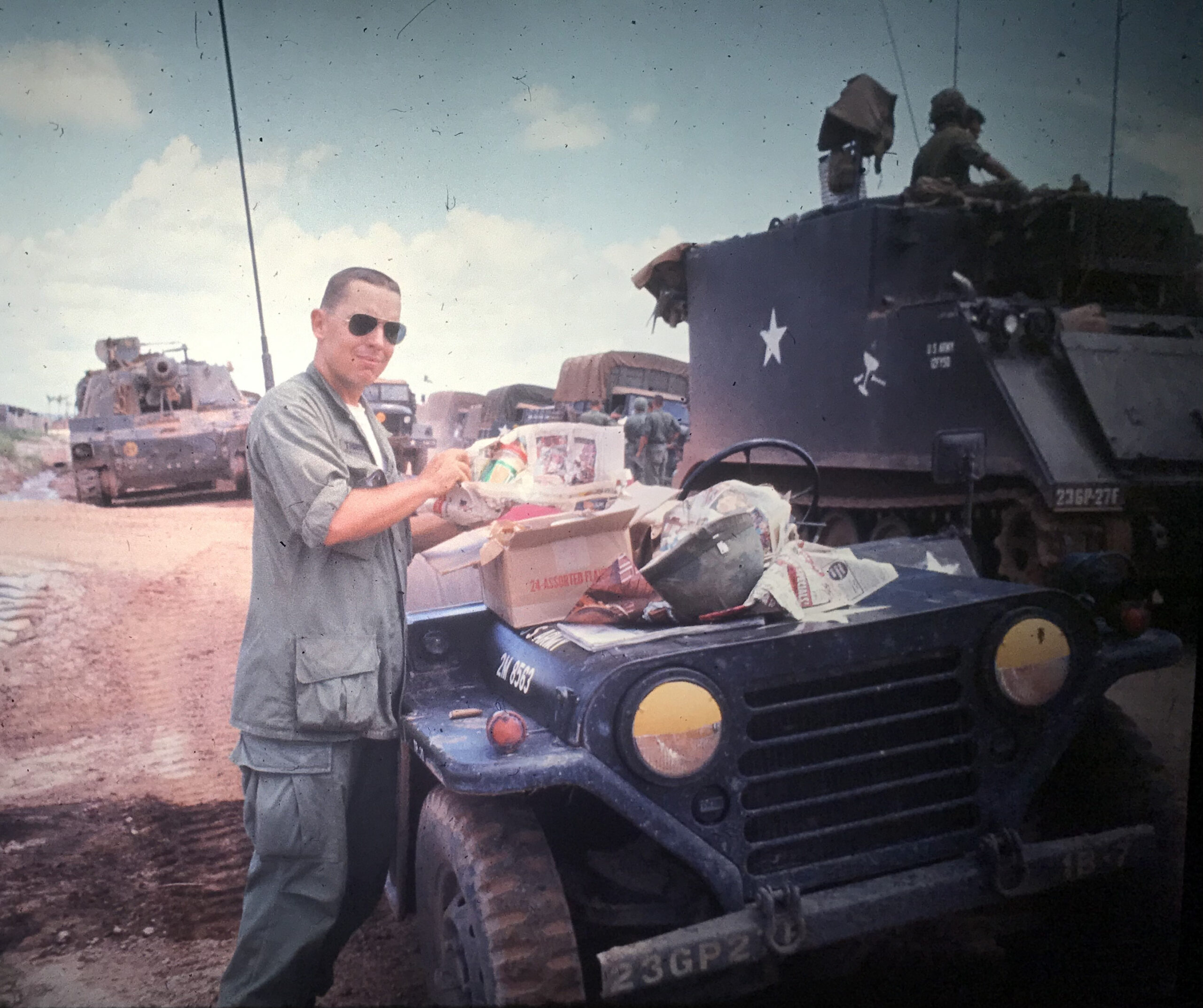
At about the six-month point in country, the executive officer from Alpha Battery had to be medevac’d out of Vietnam. Because this was a key position that had to be filled, Tom left Bravo Battery to assume the executive officer job. Two months later, he got the chance to go to Hawaii. As it was monsoon season and Tom had to pitch his tent on sandbags to keep him above the six inches of standing water in the camp, he jumped at the opportunity. Even better, Leanne was able to meet him in Hawaii, where they had time for the honeymoon they didn’t get when they were married. After a week, it was back to reality in the jungle around Saigon.
On January 30, 1968, North Vietnamese and Viet Cong forces launched a coordinated attack against military and civilian targets throughout South Vietnam, including in Saigon itself. Known as the 1968 Tet Offensive because it took place during the Tet holiday festival, the brazen attack turned the tide of U.S. public opinion against the war even though U.S. and Allied forces beat back the onslaught and inflicted such heavy losses that it took the North Vietnamese years to recover. When the attack began, Tom’s battery and another battery were in a firing position at a rubber plantation at Dau Tieng. Both batteries were ordered to return to the base camp at Tay Ninh. While Tom’s battery was ready to move, the other battery’s M109s were not fully mission capable, so Tom’s guns had to tow them back to Tay Ninh. After Tet, Tom’s battery returned to Dau Tieng, where it remained for the rest of Tom’s tour.
Once the situation stabilized, Tom got the opportunity to take some R&R (rest and relaxation) in Hong Kong. To start his journey, he hitched a ride in a Bell two-seat bubble-cockpit helicopter heading to Saigon. What he didn’t know at the time, though, was the pilot was on a mission to find something. After they took off, they flew low and slow, dodging about the trees, trying to find whatever the pilot was looking for. Tom started to think he’d made a mistake by taking the ride, as now he wasn’t sure he was going to make it to Saigon alive. Fortunately, they arrived without incident. Tom caught a flight to Hong Kong, where shopping next to actor Lee J. Cobb, he bought a Minolta SLR camera, enjoyed the food, and just relaxed. When he returned to his unit, he learned it had been rocketed and found holes in his bunk and footlocker from shrapnel from the attack. He was glad he had been on leave.
As the 1st/27th approached the one-year anniversary of its deployment, the battalion’s leadership realized they had a problem. All the men were on one-year orders to Vietnam, so if they transferred all at once, the unit would not be able to continue its mission. To address this, the call went out for volunteers to extend in country for six months to allow for a turnover of responsibilities as replacements arrived. Feeling a strong sense of obligation to his men and the unit, Tom called Leanne to see what she thought of him extending his tour in Vietnam. Having seen her husband for only two weeks before he left for Vietnam and a short leave period in Hawaii, she did not think extending was a good idea. Tom honored her position and did not extend. When his time came to return home in March 1968, he boarded a Huey helicopter and flew to Saigon, where he caught a flight back to the States on a plane loaded with happy soldiers.
When Tom arrived in San Francisco, Leanne was waiting for him. They stayed with a couple they knew and celebrated in the city for a few days before heading to Fort Huachuca to visit Tom’s parents and pick up his Volkswagen Beetle. From there, they drove to Tom’s next duty station at Fort Campbell, Kentucky. On April 5 as they were getting ready to pass through Memphis, Tennessee, they heard Martin Luther King had been assassinated there the night before. Believing the city would be in turmoil, they stopped and stayed outside the city for a day until they were sure it was safe to pass through. Then they continued to Fort Campbell, where Tom found the base’s main focus was on riot control.
Since Tom had recently promoted to Captain (O-3), he was assigned to be a battery commander for a new artillery unit supporting the proposed 6th Infantry Division. The battery consisted of six M110 eight-inch self-propelled howitzers, an even bigger gun than the M109’s Tom fought with in Vietnam. As the unit was just forming up, Tom found it difficult to train the men assigned to his battery because it was hard to find the equipment they needed. For example, they didn’t have radios, so they had to lay wires for telephones whenever they needed to communicate in the field.
On one afternoon, Tom and his first sergeant left their unit firing practice rounds while they scouted out a new firing position in a jeep. When they returned to the guns, they found the Division Artillery Commander, a full colonel (O-6), waiting for them. He told Tom, “Your battery just fired a round out of the safety zone. I need to know what happened.” Tom knew this was a big deal. He immediately went to the gun in question and found both the firing officer and the safety officer had laid out the gun incorrectly, allowing an illumination round to be fired out of the safety zone. Once the illumination round detonated, the base plate fell from the sky, going through the roof of a bar and landing in the corner pocket of a pool table. Fortunately, no one was injured. Tom reported human error caused the incident and the event blew over, although it was a good learning experience for everyone involved. The unit also made a plaque out of another base plate and established the “Base Plate in the Corner Pocket” award to recognize future operational missteps.
Once the unit completed training, everyone was sent on leave, expecting to go to Vietnam when they returned. Instead, they learned the decision had been made not to activate the 6th Infantry Division and they would not be going to Vietnam. Accordingly, Tom transferred to a new combat arms group, consisting of three infantry battalions and one artillery battalion. Tom assumed command of a battery of 105-millimeter towed howitzers in the artillery battalion. He did this for a couple of months before being elevated to serve as the battalion’s executive officer. In this position, his biggest taskings were orchestrating a formal dining in for the battalion’s officers and planning and executing the battalion’s change of command. On the personal side, Leanne gave birth to their first daughter, Susie, on Christmas Day of 1968.
In 1970, Tom returned to Fort Sill for the six-month Officer Advanced Course. There, he and other career-minded captains were called aside and told to take the Graduate Record Exam (GRE) so they could attend graduate school at a civilian college or university—after another tour in Vietnam. Tom surprised himself by getting a high verbal score but did not do as well on the math. He then set his sights on his next assignment as an advisor with the Military Assistance Command, Vietnam (MACV).
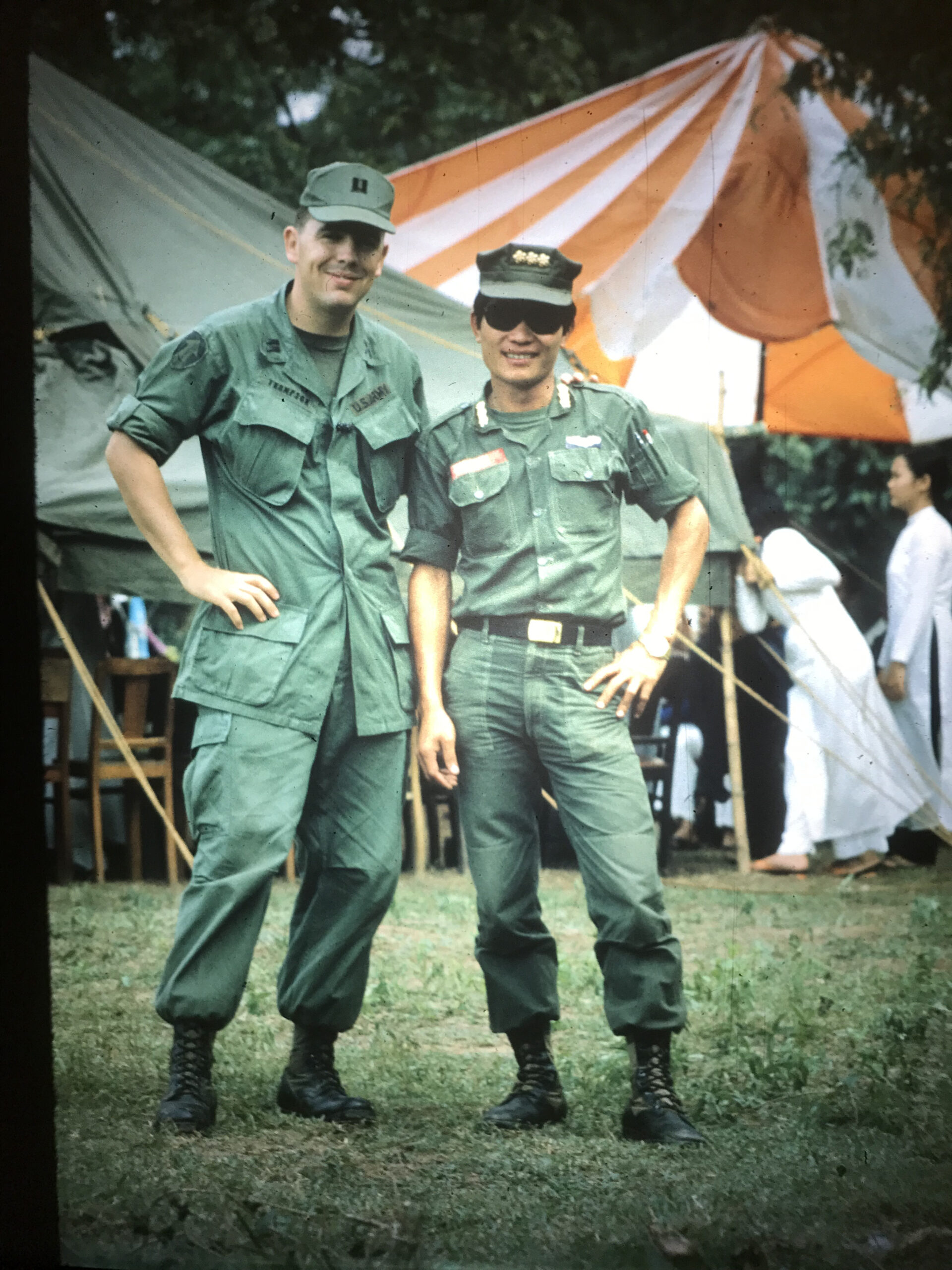
Tom reported to Saigon in the summer of 1970 as President Richard Nixon was gradually withdrawing U.S. combat forces from the Vietnam War. After several weeks of instruction, he was detailed as the Deputy District Advisor for the Province of Binh Dinh in the city of An Nhon, located about twenty miles west of the coastal city of Quy Nhon. He lived together with the District Advisor, who was a Major (O-4), and an Intelligence Officer, in a fabricated team house with an adjacent trailer on a compound they shared with a Korean Army communications contingent and the village chief and his family. The compound also had a concrete underground bunker available in case of emergencies. Tom and the major’s tasking was to get out of the compound and talk with the local village chiefs to help win the hearts and minds of the people, and to go out on patrols with South Vietnamese forces to enable their missions.
As Tom got to know the local chiefs, they began to trust him. Once as water began to rise in the area during the monsoon season, a village chief told Tom he needed Tom to take him somewhere in his jeep. With the water still rising into the jeep, Tom obliged and dropped the chief off at his destination but was then left to his own devices to get back to his compound. Although he made it back safely, the rain continued, later washing a two-and-a-half-ton truck (“deuce and a half”) off the road and drowning its passengers.
Tom was able to take leave over the Christmas holiday in 1970 and made it back to Williamsburg to visit Leanne and Susie. This time, the culture shock from being in a village in a war zone one day and then in Williamsburg the next proved too much to overcome. Also, knowing he had to leave his family to return to Vietnam right after Christmas cast a pall over his visit and he just couldn’t get into the Christmas spirit. As he boarded his flight to head back to Vietnam on New Year’s Eve, both he and Leanne agreed it had been a mistake for him to come home. He just needed to finish his tour and leave Vietnam behind for good.
Toward the end of January 1971, all the local villages began to prepare for the annual Tet holiday. In one village Tom had worked with closely, the people set up a stage and loudspeakers to begin the celebration. As the village chief approached the stage to take his seat of honor, the Viet Cong detonated explosives hidden in the loudspeakers, decimating him and his family and everyone else nearby. Tom and his interpreter, who never left Tom’s side, responded to the scene as soon as they learned what happened and began to call in helicopters to ferry the wounded to hospitals for treatment. The scene was chaos, as people tried to cling to the departing helicopters to escape what they feared was just the initial stage of an ongoing attack. The village chief was gravely wounded in the attack and did not survive. Tom couldn’t help but blame himself for the incident because he was sure the chief was targeted because he had been friendly with the Americans. It was clear to Tom the direction his team had received from the Civil Operations and Rural Development Support office in Saigon to get out in the field and work with the local population was ill-conceived, at least at this stage of the war.
The remainder of Tom’s tour in Vietnam was uneventful, aside from another short R&R period in Hong Kong. He departed Vietnam in the summer of 1971 and returned to Williamsburg to spend time with Leanne and Susie. There he learned that, thanks to Leanne, he would be able to begin graduate school at Old Dominion University in the fall. While he was in Vietnam, Leanne had shopped around his transcripts and test scores with the faculty at Old Dominion, trying to find a place for Tom when he returned. Because he had scored well on the verbal portion of the graduate entrance exams, the chair of the Old Dominion English Department gave him a slot. For the next year and a half, Tom lived at the library, earning his master’s degree in English. He graduated in February 1973.
Immediately after graduation, Tom shifted from full-time student to full-time faculty, teaching in Old Dominion’s ROTC program. This offered a well-needed change of pace and allowed for family time, especially since Tom and Leanne lived within walking distance of the university. The slower pace came at just the right time, as their first son, Matthew, was born in April 1972, and their second son, John, was born in June 1973.
One of the challenges Tom faced as part of an ROTC program at the end of the Vietnam War was attracting students to participate. To tackle this problem, he and a fellow instructor developed a summer program for freshmen in conjunction with the university’s Department of Physical Education. The program consisted of three days of instruction on campus in repelling, ground navigation, and surviving in the field. They then took the group to the George Washington National Forest in the Shenandoah Valley to practice their new skills. The program worked. Of the three groups they ran through the program that summer, half enrolled in ROTC, and two of them eventually became generals in the Army.
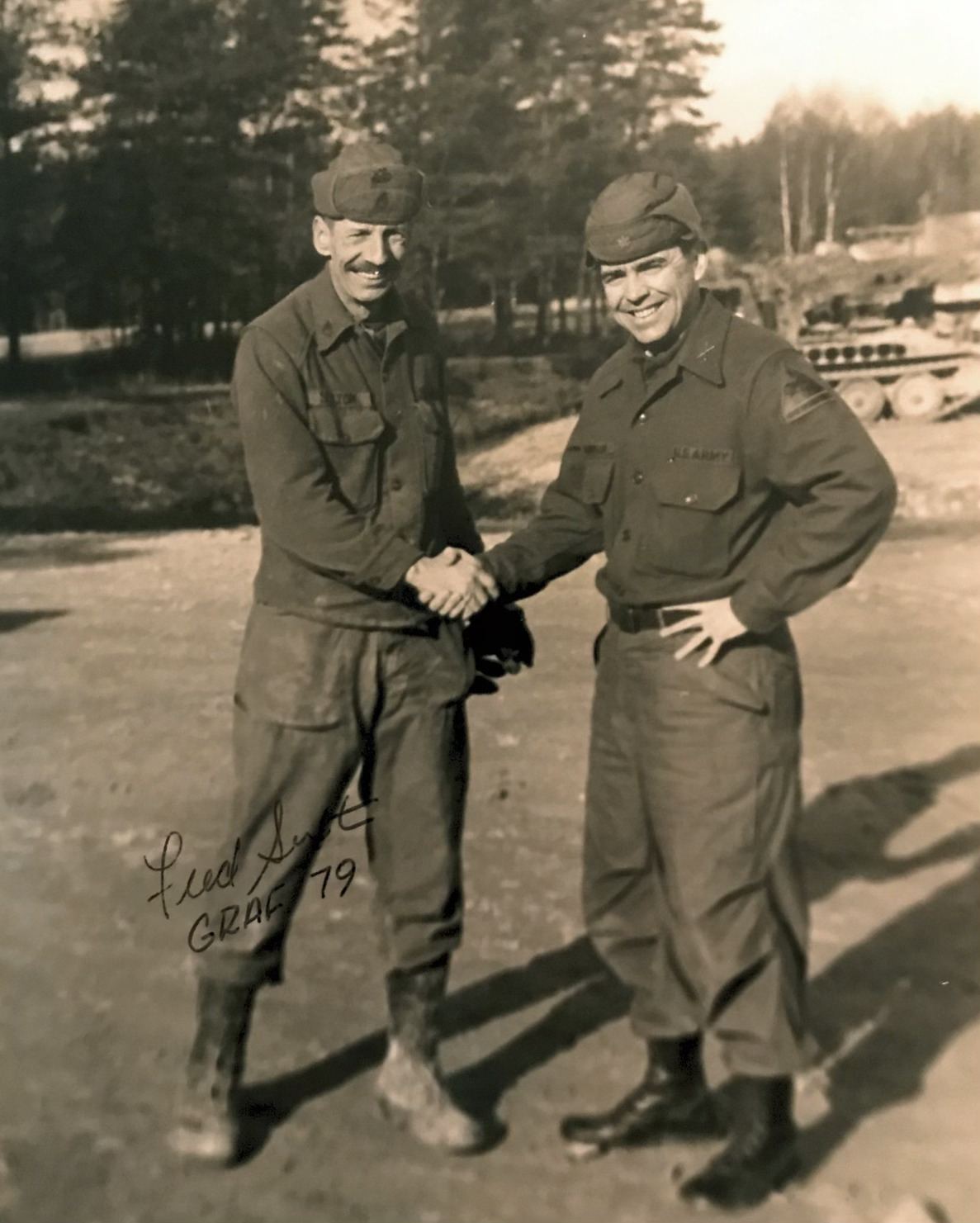
By the summer of 1976, it was time for Tom and his family to transfer again. Before he had to report to his new assignment, he went to jump school and earned his Parachutist Badge, and drove coast-to-coast and back again with his family in a twenty-five-foot RV, staying in national parks along the way. Then it was on to Nuremburg for duty with the 1st Armored Division in the Division Artillery headquarters. He reported to the Fire Support Office, just one month before the massive annual NATO REFORGER exercise, when U.S. based units tested their ability to quickly deploy to Europe, man their prepositioned equipment, and defend the western alliance in the event of a Soviet attack. Now a Major (O-4), Tom served as the Fire Support Officer in the exercise’s Tactical Operations Center, responsible for bringing to bear artillery support, including tactical nuclear options, wherever it was needed.
After the REFORGER exercise, Tom returned to Division Artillery headquarters, where he served as the Operations Officer and later the Executive Officer of the 1st Battalion of the 94th Field Artillery Regiment. He stayed in that position until the summer of 1979, when he transferred to the Marine Corps Command and General Staff College in Quantico, Virginia, as one of a cadre of ten Army officers participating in the one-year course of study. Aside from a great education, he ran incessantly with his Marine counterparts, helping him stay in shape and serving as a welcome diversion from the classroom.
As payback for getting the Command and General Staff College assignment, Tom was expected to take a follow-on tour at the Pentagon. His class had done a few field trips to the Pentagon to learn about various aspects of joint military operations and his impression was “the Pentagon didn’t look like fun.” Moreover, he was afraid his family’s budget would require him to live some distance away, forcing him into a long daily commute. When coupled with the long hours Pentagon staffers worked, Tom believed he wouldn’t have much time with his family, which now included a new baby girl, Abby.
The solution came in the form of a job advertisement in Army Times, a weekly newspaper popular with Army soldiers. Unbelievably, the U.S. Military Academy at West Point needed an English instructor – the very subject Tom had his master’s degree in – so he applied for the job. He also sent along a handwritten note explaining how much he wanted the position. He interviewed with the English Department Chair who offered him the position and he accepted on the spot. Then the Department Chair handed him back his handwritten note with a couple of mistakes circled in red. He told Tom half smiling, “When you report here for duty, you’ll have to raise you game.”
Despite being told by the detailers that accepting the West Point position instead of the Pentagon assignment would make him unpromotable, Tom took the instructor position and moved his family to their new post in New York. He taught three sections of fifteen cadets each, two of Plebe English and one literature course. To make sure the cadets could write well after they graduated, they each had to write two essays every week, one in class and one for homework. That meant Tom had to grade ninety essays each week in addition to his in-class teaching responsibilities, so he was very busy. Still, he loved his work and the time he had with his family living on the historic West Point campus overlooking the scenic Hudson River.
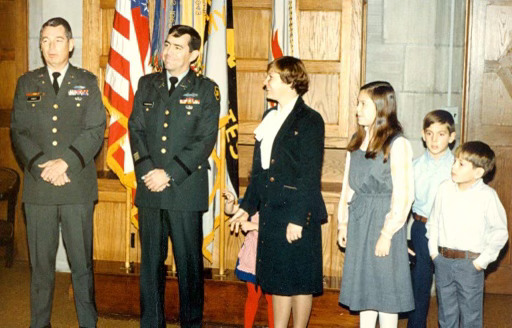
After his one-year teaching assignment ended, Tom transferred to the Academy’s Public Affairs Office. He broke into the position by writing a speech for the Academy’s new Superintendent, Lieutenant General Andrew Goodpaster, a former NATO commander and Deputy Commander of U.S. Forces in Vietnam. Tom’s other responsibilities included working with the media, organizing biannual board meetings with major New York public relations firms, and even escorting former Ohio State football coach Woody Hayes while he recorded vignettes about General George S. Patton. And, despite the naysayers, Tom promoted to Lieutenant Colonel (O-5) while he was there.
When it came time to transfer in the summer of 1983, Tom’s detailers now said he could still make full colonel, but he would have to take a one-year unaccompanied assignment in Korea to get his career back on track. Believing that would be too hard on his family, Tom turned down the assignment and instead took a follow-on position as the Director of Public Affairs for the Army & Air Force Exchange Service (AAFES) headquarters in Munich, Germany. It turned out to be one of the best assignments of Tom’s career. He led a staff of about twenty persons and visited almost every country in Europe with the AAFES Europe commander, a one-star general. Tom’s kids got to attend the Munich American High School, the same school Tom attended twenty years before. They even had some teachers in common. Tom was also able to participate in the Army War College correspondence course, allowing him to graduate from the distinguished Army War College program after transferring from his AAFES assignment back to the United States and spending a summer in residence at Carlisle Barracks in Pennsylvania.
Tom’s next assignment can only be described as something out of the movies. Tapping into his public affairs experience, he took the lead role in the Army’s West Coast public affairs office, reporting directly to the Army’s Chief of Public Affairs in the Pentagon, Medal of Honor recipient Major General Patrick H. Brady. In his new position, Tom was responsible for interacting with television and motion picture studios seeking Army support for their productions. The Navy had recently scored big with the 1986 release of Top Gun and Tom’s mission was to find the Army equivalent. Tom’s office was in the federal building on Wilshire Boulevard in Los Angeles, California, giving him ready access to producers, studios, and talent. He was involved in the production of The Presidio, a 1988 movie starring Sean Connery about a murder on The Presidio Army base in San Francisco, and the production of Fire Birds, a movie released in 1990 by Touchstone Pictures about elite Army Apache helicopter pilots operating in South America. Best of all, and contrary to those who said his unique career path would make him unpromotable, Tom promoted to Colonel (O-6) during his tour.
Before leaving Los Angeles, Tom spent six months in a “training with industry” assignment working with the J. Walter Thompson advertising agency in Century City. His mission was to learn the ins and outs of the advertising business in preparation for his next assignment as the Director of Marketing, Operations and Public Affairs for the Army’s ROTC Command, located at Fort Monroe in Hampton, Virginia. In that position, he would oversee the command’s $16 million advertising contract with the Young & Rubicam advertising agency in New York City. Tom’s time at J. Walter Thompson gave him the critical insights he needed to help him succeed in his new role.
Tom moved back to the East Coast to take the ROTC position in the summer of 1989. The move was particularly timely because Leanne’s mother lived nearby and her health was failing, so the new assignment gave Tom and Leanne some precious time with Leanne’s parents. Tom remained in the ROTC position until he retired from the Army in August 1992.
After retiring, Tom worked for several defense contractors on a range of projects and contracts, including managing a program supplementing East Coast ROTC programs at colleges and universities with experienced retired officers and non-commissioned officers, and developing a variety of computer-based instructional modules for the Army and Air Force. He finally retired in 2011 after serving as the Vice President and General Manager of an Anchorage-based company with several hundred employees throughout the country.
With lots of family nearby, Tom and Leanne settled into retirement in Williamsburg, Virginia. Sadly, Leanne passed away in July 2019, but Tom has the loving support of their four children, eighteen grandchildren, and three great-grandchildren to keep a smile on his face. And, his son John retired in 2021 from the Army as a Command Sergeant Major (E-9). Tom has also been an ordained permanent deacon in the Catholic Church, serving his parish community in that capacity for twenty years.
Voices to Veterans is proud to salute Colonel Tom Thompson, U.S. Army (Retired), for his distinguished twenty-six-year career in the Army. Not only did he serve two combat tours in Vietnam and play operational roles in Europe during the height of the Cold War, but he also worked with officer candidates in OCS and cadets at Old Dominion University and West Point, training the nation’s next generation of Army leaders. Although we can never repay him for all he has done and for the many sacrifices he and his family made over his long career, we thank him for his service and wish him fair winds and following seas.
If you enjoyed Tom’s story, please sign up for the Voices to Veterans Spotlight monthly newsletter by clicking here. Once each month, you’ll receive a new written veteran’s story and a new podcast directly in your mailbox. Best of all, it’s free and you can unsubscribe at any time.


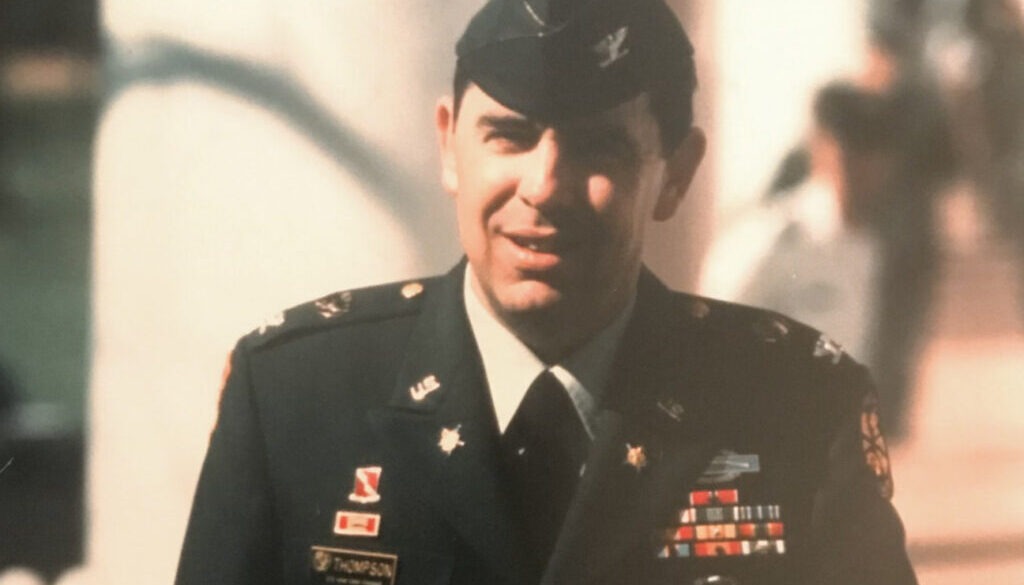
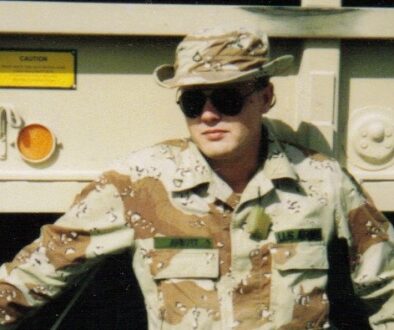

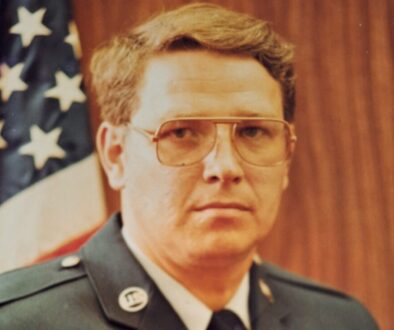
July 23, 2023 @ 9:11 PM
I served with Tom in FRG at Pinder Barracks with 1st Armored Division Artillery 1977-1978. I would like to reconnect with him.
July 26, 2023 @ 8:23 AM
COL Evans – thanks for reading Tom’s story. I’ve passed your contact information to him and I hope you are able to reconnect. V/r, Dave Grogan